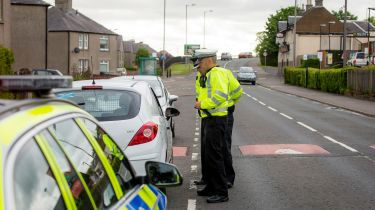How to report dangerous driving
Here’s how to inform the authorities about illegal and dangerous driving in the UK

There’s no question that mistakes and bad decisions put drivers at risk every single day, but sometimes these minor transgressions become dangerous. Nobody wants to be put at risk by others and that’s why the police enforce our driving laws.
However, officers can’t be present at every event, so if you see a driver doing something dangerous on the road – we’ll look at what counts as dangerous driving below – then you might want to inform the police by reporting it. There’s not always a clear outcome from doing so, because it all depends on what evidence is available, as well as other factors. But at the very least it helps authorities get more clarity on driving statistics for future planning.
So if you’ve seen dangerous driving on UK roads, read on below to find out how to report it and what you’ll need when you do so.
What is dangerous driving?
Dangerous driving is a broad term and can cover anything from speeding to using a mobile phone while driving. The law defines it as anything that “falls far below the standard expected of a competent and careful driver, and it would be obvious that driving in that way would be dangerous”.
It’s a more serious offence than driving without due care and attention, which is defined as driving that “falls below what would be expected of a competent and careful driver." This means that something like tailgating is rather ambiguous – it could fall into either category depending on the context. If it happens at relatively low speed and isn’t all that close, it would probably be considered careless driving, but if someone drives 5cm from the car in front at 70mph, it’s more likely to be considered as dangerous driving.
The list of things that could be viewed as either careless or dangerous driving isn’t set in stone, because it’s all about context, but other examples of driving that might fall into either category includes racing, lane hogging, weaving, ignoring road signs or lights, drink or drug driving, using a phone, being distracted by something else in the car, driving a car that’s unfit or as an unfit person, and much more.
Some of these examples you might see every day, the best example probably being speeding; if you reported every speeding driver, you’d have a full-time job on your hands. But others are less common and you might think the driver poses a significant risk with their behaviour, such as recklessly weaving at speed through traffic. That’s an example where you might want to make an official report.
How to report dangerous driving
If dangerous driving is happening right now and will continue to happen - for example if you see a road rage incident where one car is terrorising another, or you see a car recklessly overtaking and undertaking traffic at speed, you can call 999 and speak to the police to report it. Make a mental note of the car type, colour and number plate, if possible, so you can relay that information to the operator. Only use a phone if you can do so safely and legally.
You can also call the police on 101 to report an incident that isn’t an emergency. If you’ve seen someone in a car doing something dangerous but it’s no longer happening, then this is the number to call. Again, you should try to have as much information as possible to hand, including the car type, colour and number plate.

Never use your phone to record dangerous driving when you are driving yourself - doing so is a crime and you are guilty of the same offence you are trying to record. If you have a dash cam, you can let the police know on the phone and they will explain how to submit footage to them.
Reporting online may also be possible, but you’ll have to go to the website of the police force that covers the area where the incident occurred. Usually these sites have a section where you can report crimes and include a way to upload your dash cam footage. Nextbase, a popular dash cam brand, has a convenient map on its website to help you find the correct police force.
What information should you provide when reporting dangerous driving?
The more details you can give to the police, the more likely it is that action will be taken. The obvious things to keep in mind are the car itself (the make, model, colour and number plate) and the description of the incident, but you should also think about providing a description of the driver. Perhaps you know who it is (although this isn’t likely because most people don’t report people they know for driving offences, even if they know they are breaking the law), in which case you should give those details as well.
You also need to know the time and date that it occurred, along with the location. You can use online maps to get an exact spot if needed. There might be other details you need if the context is different; for example you could describe the bicycle of a rider you are reporting for dangerous behaviour if there is no car involved.
Be prepared to give an official statement if the case goes to court; while your details won’t be shared with the accused if police decide to prosecute, you may need to appear in court or make an official statement as a witness.
What are the penalties for dangerous driving?
The penalties depend entirely on which law that the police decide has been broken. For example, using a mobile phone while driving carries a penalty of six points and a fine in most cases, but could also lead to a £1,000 fine or a driving ban in some court cases.
Dangerous driving as a specific offence has a penalty of up to two years’ imprisonment as well as up to 11 penalty points. Death by dangerous driving can lead to up to 14 years imprisonment and an unlimited fine. Careless and inconsiderate driving can also be subject to an unlimited fine and up to nine points.
Frequently Asked Questions
Yes, anyone can call the police to report crimes that are happening now or that have happened in the past.
Find a car with the experts





